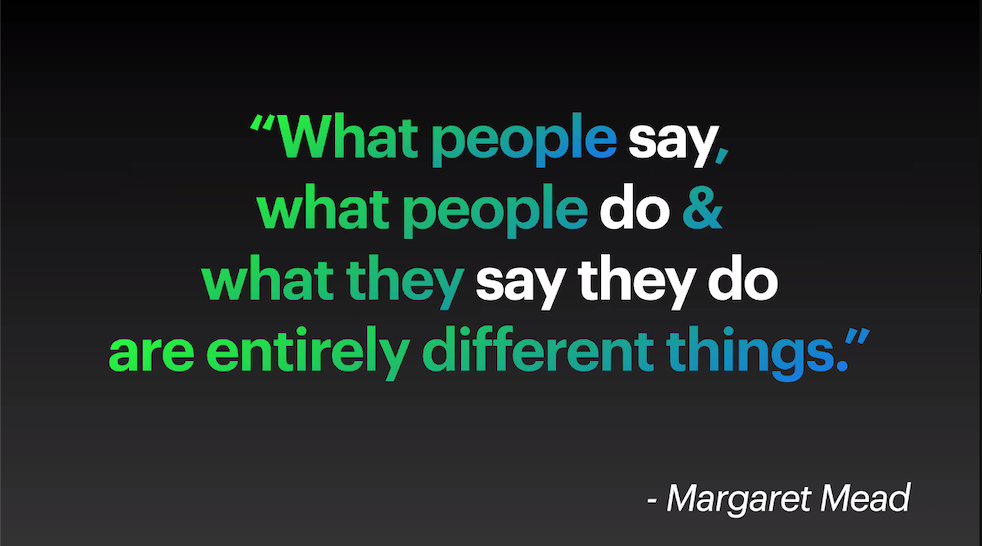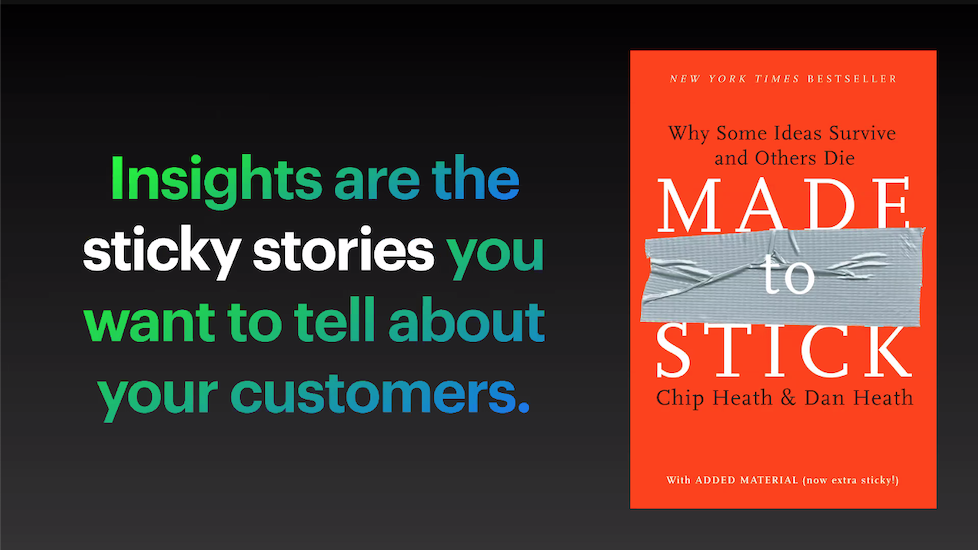Following a number of sessions on gathering customer feedback, we were fortunate to be joined by seasoned researcher Jess Nichols to share some insights on the next stage of research – bringing it all together and synthesising your qualitative data, creating reusable and actionable insights and advocating your research across your team.
Setting up for Success – Do Not Do Research in a Bubble
Research is there to mitigate business risks.
Therefore, one of the worst outcomes is for your research to be ignored, shelved, or not utilised.
Alleviating this risk begins before you even start conducting your research. Give some thought to what successful research looks like. Are you trying to drive to specific research outcomes? What is the wider business context? Are there strategies or OKRs that can act as your guardrails? Work with your team to ensure you are solving the right knowledge gaps for them. Having this North star can help to provide clarity in what questions you need to answer with your research.
Synthesising your Data
Once you have collected all your feedback and conducted your interviews, it’s time to collate your research and find the patterns in the data. This is crucial for connecting your data to any desired outcomes.
Participants will commonly try to contextualise questions with their understanding of the problem or situation. They may apply their own biases to their responses. So you should not take their responses at face value. Understanding, and classifying the data into behaviours (what people do) and attitudinal (what people think) can be beneficial. Try to drill into the responses to find the underlying pain points.

You can then form insights from the patterns of behaviours or attitudes.
Some tips for when you analyse your data:
- There is no single right way to analyse your data. So just start, and pivot along the way.
- Use your OKRs to guide you.
- Be comfortable with conflict.
Sharing your Insights
One of the aims of research is to have no surprises at the end. Share as you go. This can help to identify what resonates, what may be controversial and need more care, or what can derail conversations and should be avoided.
Research also won’t be useful if your teams don’t understand it. Creating stories can be a useful vehicle to deliver insights. Your team is more likely to remember stories that they can connect with, which can make it easier for them to incorporate the customer insights into their work.
- Tie the insights back your original research questions;
- Advocate for your customers’ needs (especially those which may not have been considered by your team in the past);
- Help your team understand how to action what you’ve learnt about your customers.

There will always be biases, from both your participants (friendliness, social desirability, habituation) and your own (confirmation bias, cultural bias, halo effect, etc). The main thing is to recognise them and to then try to minimise them.
Ensure your Research makes an Impact
As well as being the biggest advocate for your research, find and partner with others to help champion and influence behaviours.
A handy way to approach this is by:
- People: to amplify your learnings. You can start with designers, marketing and product marketers, other product managers and your research community.
- Processes: to add traceability to your findings. Insert relevant insights into the product development process, through user stories, requirements documents or annotations in designs.
- Platforms: to store your research for future use. Upload your presentation to your internal wikis. Bring up relevant insights during meetings. Share bite-sized insights over chat.
Your research will not always have a clear or direct impact on a business outcome. Sometimes the result will be more subtle, and change the direction or the way we understand our customers over a longer period of time. Either way, celebrate the impact you make, big or small.
Successful research involves a level of humility. Not just listening to your research participants, but listening to your internal stakeholders so you can be effective with them using it.
Thanks
Thank you to Jess Nichols for sharing, to our volunteers Nosh and Steve and our event sponsors Pluralsight / A Cloud Guru.
Further Reading and Resources
You can find Jess on LinkedIn, Twitter or her website http://www.jessnichols.com.
Some resources mentioned during the session include:
- Made to Stick: Why Some Ideas Survive and Others Die by Dan and Chip Heath
- Mental Models, Aligning Design Strategy with Human Behavior by Indi Young
- Interviewing Users: How to Uncover Compelling Insights By Steve Portigal
- Validating Product Ideas Through Lean User Research By Tomer Sharon
- Just Enough Research by Erika Hall
- Competing Against Luck by Clayton Christensen
- [YouTube] UX Research sample size explained: How many users do you REALLY need?
- Interview transcription tools include Zoom with some of their paid plans, or third party tools such as Otter.ai or Rev.
